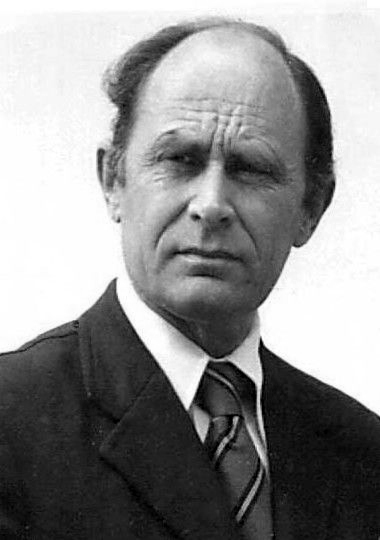
The late historian Antony C. Sutton is one of the most influential thinkers in the current American populist movement. The Mises Institute has repeatedly promoted his work, as has the Cato Institute, and his books are steady sellers on Amazon (an impressive feat given that most of their content is now available for free on accessible html webpages). [1]
If you have ever encountered a description of “Hegelian dialectic” which has nothing to do with George Wilhelm Friedrich Hegel’s philosophy, but everything to do with secret global government propaganda techniques, you have been witness to the legacy of Antony Sutton. If you have ever heard the claim that one secret force controls both large-scale capitalism and large-scale communism all over the world—but that conspiratorial force is not the Jews–-that too is the work of Antony Sutton.
A British-born economic historian, Sutton established himself in the 1960s at the Hoover Institution, a neo-conservative think tank deeply connected to the national security state. In the 1970s, however, Sutton expressed criticism of the Washington establishment, particularly Nixon-era policies of détente. He then distanced himself from the Hoover Institution, publicly declaring that he was being hounded out of academia for adopting anti-establishment politics. The mystique of a whistleblower has surrounded Sutton’s reputation ever since, but as we will see, evidence of his being martyred for his beliefs is lacking.[2]
By the end of the decade, Sutton had found a new career in the world of right-populist writing and activism. For a time he had a major role in the Libertarian Party of California, and he was long promoted by the John Birch Society.[3] With his pedantic tone and posh accent worthy of the Royal Shakespeare Company, Sutton cut a charismatic figure. And he did a significant service for an anti-communist movement which had recently been rocked by anti-Semitism scandals through its affiliation with Revilo P. Oliver, a University of Illinois professor and John Birch Society co-founder; Oliver began openly espousing an anti-Christian white supremacist doctrine in the mid-1960s.
One of Sutton’s first projects for the ultra-conservative movement was to deconstruct the older body of anti-communist conspiracy literature which had been inspired by the fascist British author Nesta Webster and promoted by Oliver. Sutton took Oliver’s place as the most academic of far-right authors, refreshingly free of anti-Semitic theories (which Sutton regularly denounced).[4]

Historians tend to steer clear of Sutton’s popular books, regarding them in the same league as Bill O’Reilly’s pseudo-historical potboilers. There is good reason for this: As the analysis below illustrates, Sutton’s post-1973 work is unprofessional at best and willfully fraudulent at worst. Until now, the closest thing to an academic discussion of Sutton comes from “anti-hate” activist Chip Berlet, who falsely portrays all populists as paranoid.
Berlet was correct to connect Sutton to what historian Frank P. Mintz referred to as “conspiracism,” which he describes as an “ideological world view” that sees conspiracy in command of “all of history,” dismissing any evidence to the contrary.[5] At times, libertarians have also criticized Sutton, as when scholar Michael Rectenwald—and later podcaster Richard Cox—exposed some of his falsehoods.[6]
Sutton cherry-picks his information artfully and purposefully—so artfully and purposefully, in fact, that it becomes clearcut propaganda. And in the case of some figures, like Leon Trotsky and Raymond Robins, he simply fabricates history. My exploration of Sutton’s mis-statements and deceptive narratives will begin with one of his most influential books, Wall Street and the Bolshevik Revolution. I will also explore the inconsistencies in Sutton’s description of his career, and the possibility that he consciously supported a Cold War agenda while purporting to be a critic of it.
The Fabrication of an Unsolved Mystery
“The Bolsheviki hate beauty of any kind, and a part of the responsibility of the rest of the world is to conserve such beauty as still exists in Russia…”
– Charles R. Crane, President Woodrow Wilson’s Appointee to the Special Diplomatic Commission to Russia, Chicago Daily News, September 26, 1917[7]
The first book that Sutton wrote in the aftermath of leaving the Hoover Institution was an ominous speculative history of the Russian Revolution focusing on the background role of the American elite, especially those affiliated with high finance in New York. Sutton claimed that all prominent historians of the era had downplayed the role that Wall Street interests took in the American Red Cross Mission which had visited Russia during the revolution. In particular, academics had overlooked the friendly dialogues that U.S. agents like Raymond Robins and General William Judson had with the founders of Soviet Russia after the communist insurrection.
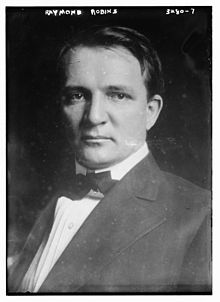
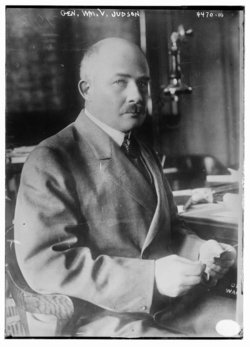
These events all pointed to a hidden alliance between Wall Street bankers and Bolsheviks to overthrow the more pro-capitalist Provisional Government led by Alexander Kerensky. When one looks clearly at the historical record, all the evidence shows that Western financiers, in collusion with President Wilson, contrived a “planned socialist Russia” to serve as “a captive technical colony” for “American monopoly capitalists,” according to Sutton. Only an advocate of “laissez-faire entrepreneurs” like himself dared to look at the big picture.
When the primary lie about the Iraq War was exposed in 2005, it was in a leaked memorandum which stated that “facts were being fixed around the policy” rather than the policy being built around the facts. Antony Sutton was a man who fixed his facts around his predetermined theory: Any information that got in the way of that theory was suppressed, and any other data was tortured to confess what Sutton wanted to hear.
In Wall Street and the Bolshevik Revolution, the intellectual torture program commences after the introductory chapter, with the claim that President Wilson personally provided a passport to Leon Trotsky so he could overthrow the Provisional Government in Russia. In reality, there is no evidence that Wilson knew who Trotsky was in April 1917 when the latter returned to Russia.
The citation for this extraordinary claim is a book by Virginia lawyer Jennings C. Wise but, when read closely, we find Wise is talking about Woodrow Wilson in 1911, before he was president, lobbying for the right of all Russian Jews in America to travel back to their homeland. In 1911, Leon Trotsky had never been to America.[8]
The title of the Wise book gives some idea of the biases that drive Sutton: Woodrow Wilson: Disciple of Revolution. Wilson was in fact such a counter-revolutionary that he re-instituted racial segregation in the federal government the week that he assumed the presidency. Before that, he had celebrated the anniversary of the American Revolution with a speech that referenced Edmund Burke more than Jefferson or Franklin.[9]
A look at the very government correspondence files that Sutton cited in his book shows that Woodrow Wilson and the New York financiers were enemies of the Bolshevik Revolution from the beginning. Indeed, there is an entire book based on this correspondence called America’s Secret War Against Bolshevism: U.S. Intervention in the Russian Civil War, 1917-1920 by David S. Foglesong. There we find that Wall Street giant National City Bank authorized controversial transfers by the defunct pro-Kerensky government in mid-1918 which benefited the anti-Bolshevik army in southern Russia.[10]
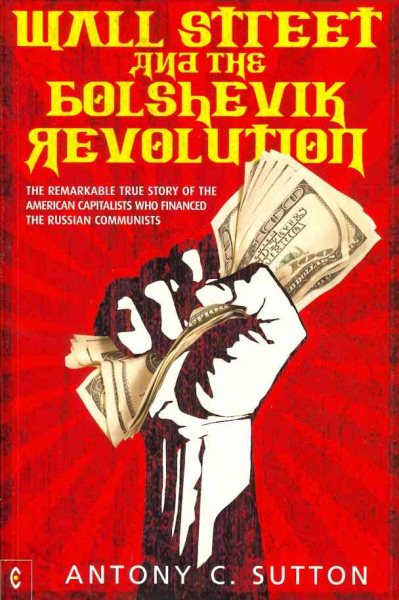
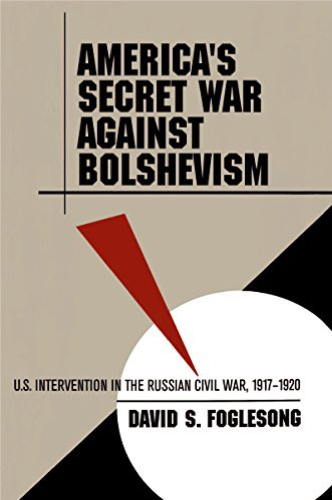
In December 1917, President Wilson himself co-signed a top-secret million-pound payment by the British to General Lavr Kornilov, the right-wing strong man who had launched a coup against the liberal Petrograd government even before Lenin did. These documents come from the same State Department file which Sutton cites most prominently, decimal file 861. Sutton’s original readers could not check that file easily, but you can now find it online.[11]
Sutton’s third big lie is that Leon Trotsky departed Canada in April 1917 through the secret initiative of British intelligence. In reality the foreign minister of the anti-Bolshevik Russian government, Paul Miliukov (Pavel Miliukov or Pavel Milyukov), openly asked the British to release Trotsky from the Nova Scotia internment camp in which they were holding him. In Miliukov’s memoir—to which Sutton surely had access—the liberal Russian noted that:
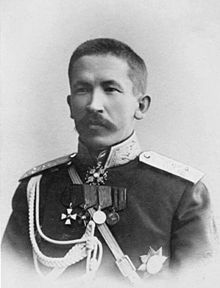
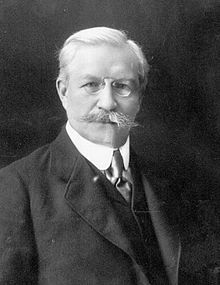
“Trotsky arrived [in May] and subsequently, I was severely blamed for ‘letting him through.’ Indeed, I insisted that the English, who had Trotsky on the blacklist, not detain him. Those who blamed me, however, forgot that the government had already given a general amnesty. Moreover, Trotsky, although preparing himself for the future, was still considered a Menshevik. Nevertheless, when Lenin began delivering his criminal speeches before tremendous crowds from the balcony of Kshesinkaia’s home, I insisted in the government on his immediate arrest.”[12]
While Trotsky was later accused of being a German puppet, Miliukov was a sworn enemy of the Kaiser. Indeed, Miliukov was soon driven from office because the Russian people rejected his policy of endless war with the Germans.
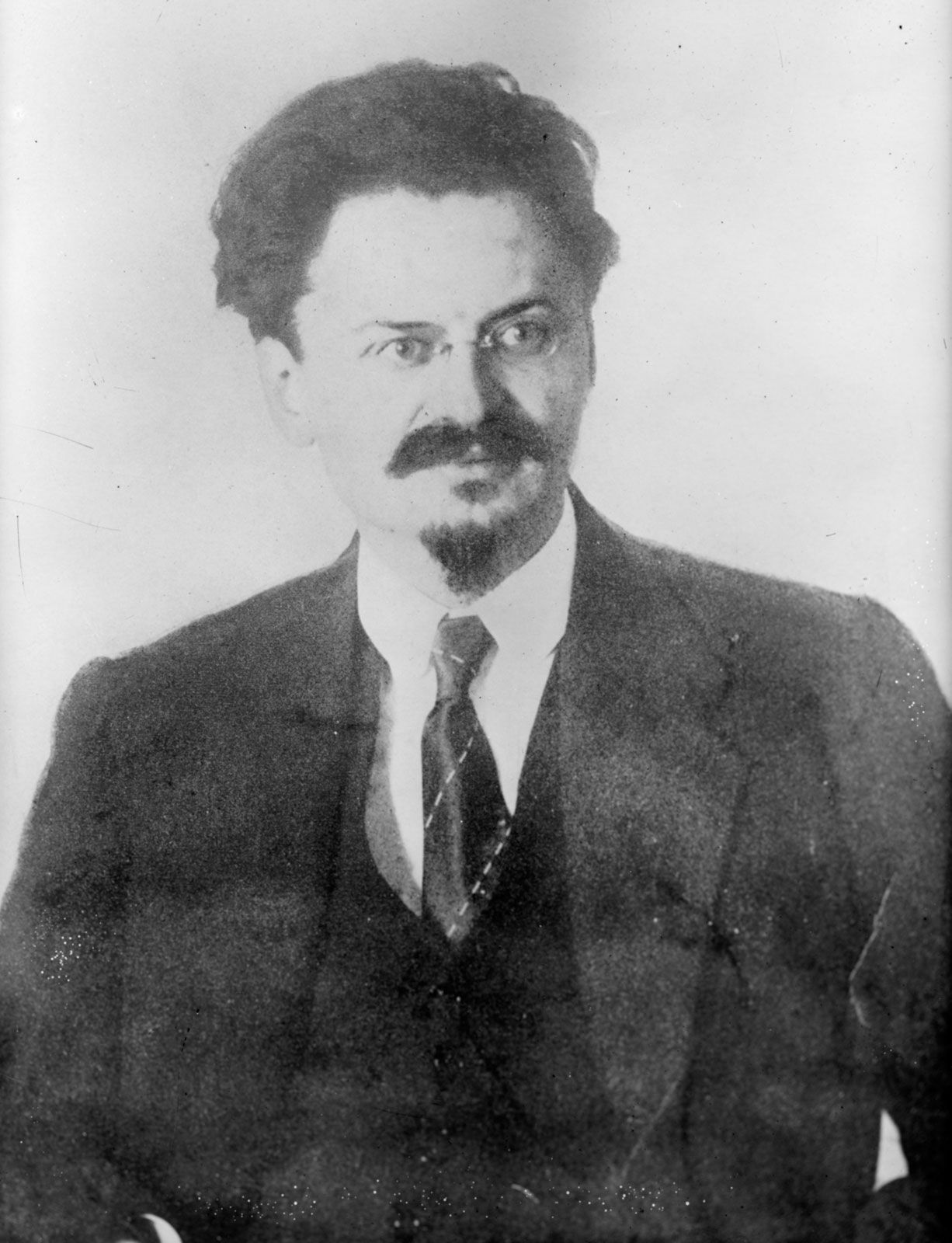
Breaking No New Ground, Burying the Facts
Part of Sutton’s appeal to his audience was his implication that he had unearthed relationships that had been buried by mainstream historians. In the case of Wall Street and the Bolshevik Revolution, this was outrageously deceptive. In reality, two of the most prominent U.S. historians of the 20th century, William Appleman Williams and Christopher Lasch, had both written extensively about the U.S. elite’s practice of sometimes attacking, sometimes mollifying Lenin and Trotsky in this period. So had John Dos Passos, one of the great American authors. Sutton was not obliged to agree with the research of these men, but he was obliged to acknowledge its existence. By not doing so, he was effectively suppressing facts about the revolution.[13]
William Appleman Williams in particular had explored the ambitions of Western bankers to exploit Russia as an economic colony. Yet his research did not show Wall Street doing this through the Bolsheviks, but through the anti-Bolsheviks in Russia. In his 1952 book American-Russian Relations, 1781-1947, Williams documented that, “after the outbreak of World War I,” spurred by the Tsar, U.S. exports to Russia exploded to more than $600 million–
“To help finance these purchases, Russia floated loans in “aggregate over $96,000,000” through Morgan’s New York Office. In addition, some $86,000,000 was supplied by Morgan through the British. Morgan representatives also dominated the American-Russian Chamber of Commerce organized in spring of 1916. [By 1917, production of] Russian pig-iron had actually decreased.”
In a section of his book titled “A Revolution Challenges the House of Morgan,” Williams noted that “the House of Morgan not only had an important stake in American-Russian trade and large direct investments in Russia, but also, by 1917, had immense sums tied to the Allied cause in the war.” Contrary to Sutton’s assertions, Wall Street bankers had no motivation to undermine the capitalist status quo in Russia, because they were the primary beneficiaries of it.[14]
Morgan did, however, have great incentives to keep Russia at war with Germany by any means necessary. This is why Wall Street contrived the American Red Cross Mission to Russia—its agenda was to keep anti-war parties like the Bolsheviks out of power, not to put them in. William Appleman Williams documented this 20 years before Sutton’s book. If Sutton’s purpose was to divert populists away from Williams’s rigorous history of Wall Street involvement in Russia and toward his own more dishonest one, he did a superb job.

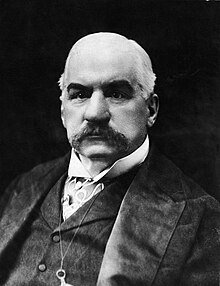
Wall Street also had clear motivation to preserve a Russian government that would pay back the $1.7 billion in loans from Morgan-associated banks in some form. But the financiers had no reason to expect such cooperation from Vladimir Ilyich Lenin, who was among those Russian militants who had denounced foreign debt. Indeed, Lenin’s last major book before the revolution was Imperialism, the Highest Stage of Capitalism, which observed that the “the country which exports capital skims the cream.” The Bolshevik founder asserted that “Capitalism, which began its development with petty usury capital, is ending its development with gigantic usury capital.”
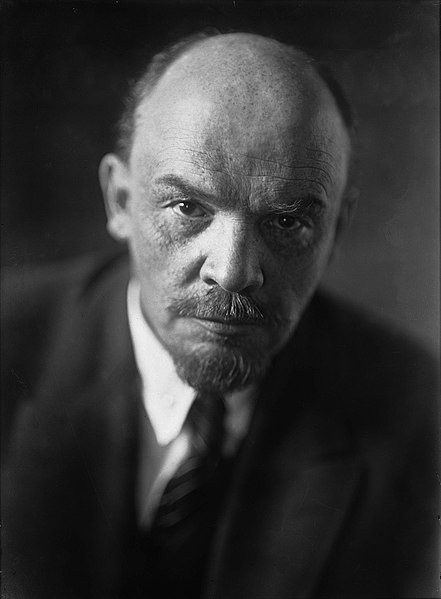
Economic historian Hassan Malik notes that “finance capital and its destruction would become a central theme in Lenin’s speeches and writings leading up to the October Revolution…” Lenin’s foremost fiscal action would be “the repudiation of Tsarist debts after the Bolshevik Revolution of 1917 [which ultimately was] the largest and the longest running default in more than 800 years of financial history.” Sutton does not mention any of these facts.[15]
Equally striking, Sutton does not mention that the Bolsheviks and bankers actually had physical confrontations when the former took power. National City Bank—a Rockefeller affiliate which Sutton otherwise obsesses over—had its Petrograd office raided by Soviet agents who “proceeded to seize its documents and vault keys,” and arrest the branch manager, R. R. Stevens. “Reds Seize U.S. Bank,” screamed The Washington Post on December 29, 1917, but Sutton somehow missed that.
A prominent French banker, Maurice Verstraete of the Russo-Asiatic Bank, was also forcibly detained by the Bolsheviks that month as his company was nationalized in a process that seemed “more military than financial” to him.[16] Years later, when the Soviets began official trade negotiations with Western leaders, it was with the understanding that Russia had full sovereignty over its finances. Even during the New Economic Policy, as historian Carroll Quigley observed, “Banking was not free. Banking and finance were left in government hands.”17
It was the Bolsheviks’ clear willingness to confront foreign exploiters that forced the Wall Street-Red Cross cabal to belatedly engage with them. Historian Neil Salzman notes that “members of the Red Cross mission, not knowing what to expect from the Bolsheviks, had stood twenty four hour guard protecting their quarters” in the week after the revolution. Finally, Raymond Robins decided to visit Trotsky to explore the possibility of evacuating from Russia.
The Soviet official indicated that he only held the lead organizer of the mission, Wall Street magnate William Boyce Thompson, under suspicion. “Against this background, Thompson became persona non grata in Bolshevik Russia” and fled the country within the month, according to Salzman. In Sutton’s book, Thompson left Russia flush with satisfaction that he had helped the Communists to power. But in real life, Ambassador David R. Francis—who Sutton considers to be a reliable source—told a Senate subcommittee that “Thompson’s departure [was] dictated by fear.” [17]
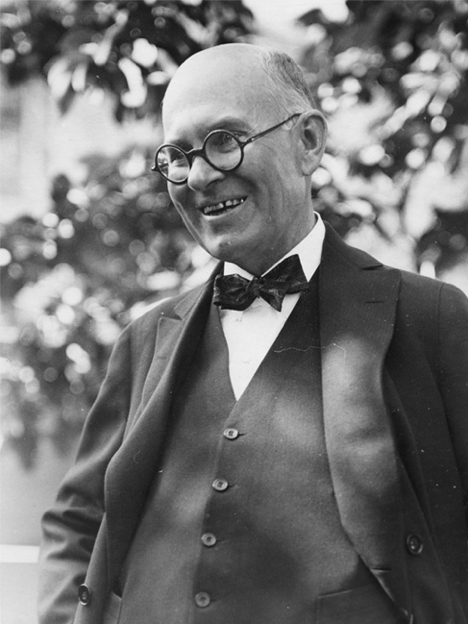
The fact that Westerners and Soviets had fleeting relations in the World War I era is only shocking if one glosses over how extraordinary that conflict was—the first in the 20th century to kill millions of men, women and children. In the course of the upheaval, four long-standing empires collapsed, all of them bordering on—or overlapping with—Russia. Lenin wanted an end to the war, but soon found that the Germans (and possibly the Japanese) were hungry for Great Russian territory beyond the Ukraine, and he contemplated rejoining the British-led Entente for protection in the winter of 1918.[18]
While Trotsky looked to immediate world revolution, Lenin leaned toward “peaceful co-existence” and “socialism in one country,” which created mixed signals. The British elite simultaneously had their own indecision: Lloyd George was open to any Russian government willing to fight the Germans, while cabinet member Winston Churchill was vowing to “strangle the Bolshevik infant in its cradle.”[19] (After Germany surrendered to the Entente in 1919, the British briefly ordered Weimar German troops to fight the Soviets.) Arthur Bullard, a U.S. official in Russia whom Sutton considers reliable, declared that “the situation is so complicated that it is dizzying.”[20]
The closest that Sutton comes to acknowledging complexity rather than collusion is in presenting a “tug-of-war in Washington” between young Morgan operatives like Raymond Robins who courted the Bolsheviks, and midwestern-born “old-line diplomats such as Ambassador [David] Francis.”
The trouble is that it was the anti-communist Ambassador Francis who had been a personal friend of Jack Morgan for over a decade—Francis was also a crony of top executives for Guaranty Trust and National City Bank. Raymond Robins, in contrast, had never met Morgan; he was a labor lawyer who was introduced to the New York elite through the initiative of Theodore Roosevelt. And even Robins had no love for the Bolsheviks prior to their seizure of power, working instead for Kerensky’s anti-Bolshevik, pro-war government.[21]
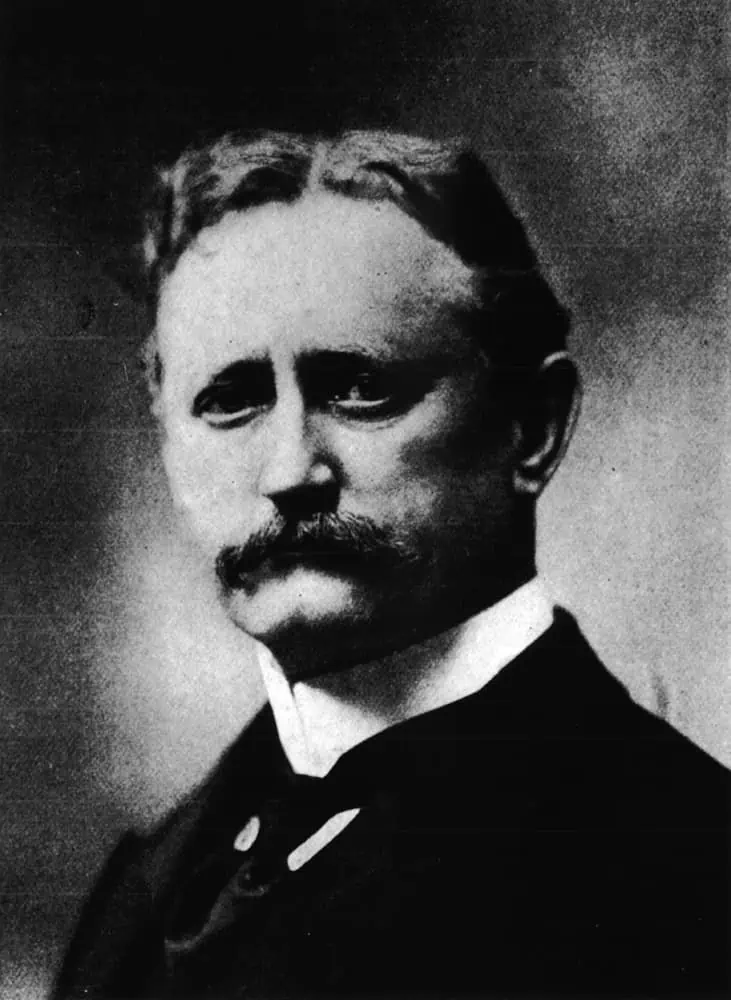
In Sutton’s eyes, Robins is implicated for having a communist sympathizer, Alexander Gumberg, as his personal translator—but Sutton does not tell us that Robins’s first choice for translator was Princess Sasha Kropotkin, an aggressively anti-Bolshevik noblewoman. Robins only hired Gumberg after she quit, and after the Soviets took power. (The princess was a close friend of British author-spy W. Somerset Maugham, who was in the country specifically to do covert pro-Kerensky propaganda.)[22]
Such distortion carries over into portrayals of Western funding in Russia. Sutton gives passing
mention to William Boyce Thompson’s financing of anti-Bolsheviks, while using a bold section heading to recount “Thompson Gives the Bolsheviks $1 Million.” But this million was given after the Communists took power, specifically so they could spread anti-war propaganda to the Germans, thereby helping the American war effort.
Within a month, Thompson was dismissed as “a crank” at the White House for his newfound support of Lenin, and denied an audience with Wilson, who refused to match his contribution. This is in contrast to the hundreds of millions of dollars that Wilson gave the Kerensky government—some of which was spent on propaganda, painting Lenin as a German puppet. In 1918, tens of millions of dollars (much of it laundered through Morgan banks) were then secretly given to the White Russians in the civil war, followed by a commitment of 13,000 U.S. troops to their failing crusade.[23]
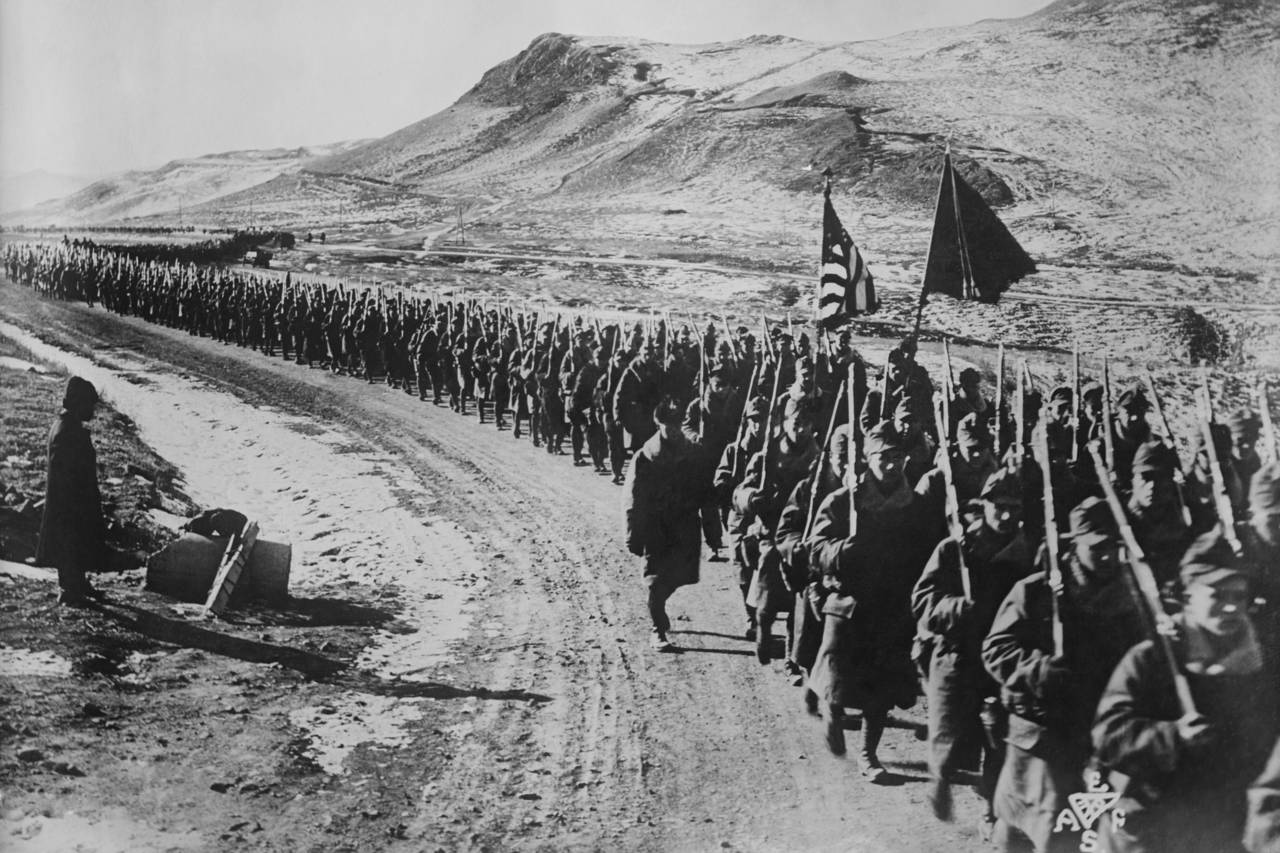
This deployment of Entente soldiers against the Bolsheviks is never mentioned by Antony Sutton, despite more than 400 American boys dying for the White Russians. Here the maverick historian mimics the state-approved schoolbooks, which generally omit the illegal invasion. There is no way to spin the operation positively, of course: The Commanding General in Siberia, William S. Graves recalled that his White allies treated civilians with a policy of “might makes right,” writing that “the anti-Bolsheviks killed 100 people in Eastern Siberia to every one killed by the Bolsheviks.” Historian Arno Mayer wrote that Admiral Alexander Kolchak, selected by the British to be supreme commander of the Russians, was “an undisguised ideological warrior who publicly endorsed The Protocols of the Elders of Zion,” and described Kolchak’s lethal pogroms as a precursor to the Holocaust.[24]
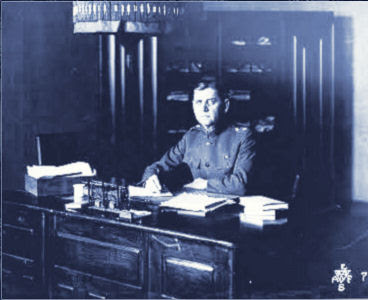
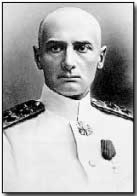
Despite this, U.S. troops reported that their POWs were generally well-treated by the Bolsheviks, or “Bolos” as they called them. Graves soon had to deal with the fact that, as in later Cold War conflicts like Vietnam and Korea, many soldiers began to sympathize with the enemy. Sergeant Silver K. Parrish of Michigan was nearly court-martialed for organizing a petition asking “why we were fighting the Bolos and why we haven’t any big guns and why the English run us and why we haven’t enough to eat.”
In his diary, he called the White commanders “a clique of blood-sucking, power-loving, capitalistic, lying…officials who keep their people in this ignorance and poverty,” and wrote that “the majority of the people here are in sympathy with the Bolo and I don’t blame them—in fact I am nine-tenths Bolo myself.”[25]
If Raymond Robins’s call to recognize the Soviet government in 1918 had been heeded, the disastrous U.S. military intervention could have been avoided. Then again, that is assuming he was sincere, for here, Antony Sutton may, for once, have not been suspicious enough; some of the most pro-Bolshevik voices from the West at the time—like British journalist Arthur Ransome—turned out to be working as double-agents to infiltrate the Communists. (Sutton strangely avoids mentioning Ransome, who was Robins’s ally during this period.)
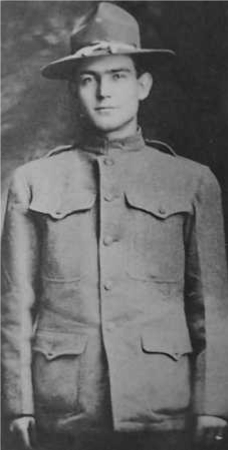
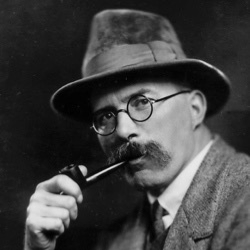
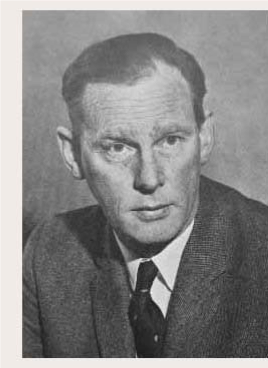
Sutton very pointedly suppresses the truth about Bruce Lockhart—the British diplomat who also collaborated with Robins—denouncing Lockhart for his coziness with Trotsky and Lenin without mentioning the acknowledged fact that the British official was running an elaborate plot to overthrow the Soviet government behind their backs. “The Lockhart Plot” may very well have led to the shooting of Lenin in August 1918. Considering this precedent, there is as much evidence that Robins was penetrating the Soviets for sabotage as there is that he earnestly assisted them; the historian discusses the latter possibility at length, but never the former. In the eyes of an anti-communist zealot like Sutton, only the Reds are born liars. In reality, the treachery of capitalist governments is hard to surpass.[26]
Plagiarizing Pravda
The American Red Cross mission’s anti-Bolshevik, pro-Kerensky activities are at the center of one of the most grossly dishonest passages in Wall Street and the Bolshevik Revolution. In Chapter Three, Sutton presents an excerpt from a source which he identifies only as “a Moscow newspaper” dated December 17, 1917. The newspaper pointed out the deep connections between the Red Cross mission and Wall Street, and exposed the fact that the mission leaders had secretly made political donations to “socialist revolutionaries.” Sutton implies that this is a reference to the Bolsheviks, and quotes the newspaper writers asking:
“Why are [the Wall Street interests] so interested in enlightenment? Why was the money given to the socialist revolutionaries and not to the constitutional democrats? One would suppose the latter nearer and dearer to hearts of bankers…working men and peasants trust the social revolutionaries. At the time when the money was passed the social revolutionaries were in power and it was supposed they would remain in control in Russia for some time.”
Here is what Sutton does not say: In Russia in 1917, the term “socialist revolutionaries” referred to an official party led by Alexander Kerensky, the opponent of the Bolsheviks (he had locked up hundreds of them that July). The Socialist Revolutionaries, whose name is sometimes translated as “the Social Revolutionaries” and abbreviated as the SRs, were only “revolutionary” in relation to the Tsar and only “socialist” in relation to the laissez-faire tendencies of the 1890s, when the party was first conceived. These liberal socialists had long been publicly supported by the U.S. elite because the senior leaders of the SRs were committed to continuing World War I.
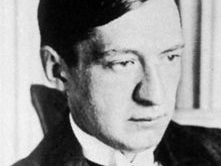
Judging from its targets, the excerpt does not come from a Socialist Revolutionary newspaper. Where does it come from? Sutton fails to identify the source, but it clearly comes from a Bolshevik publication—more than that, it appears to actually come from Pravda, Lenin’s own paper (Pravda was owned by the Communist Party and at this time was co-edited by Lenin’s sister). Just over a week before the article’s publication, Ambassador Francis wired the State Department that
“Pravda, Bolshevik organ, today contains letter from Vladimir Bakrylov, former secretary of Breshkovskaya, headed, ‘Relations of American Red Cross with Russian political men.’ It relates that Breshkovskaya and Sauskis, Kerensky’s secretary, were ‘cooking up something with a group of Americans from the Red Cross’; that Americans had promised two million dollars; that Sauskis brought ‘[Raymond] Robins and two other Americans,’ who handed Breshkovskaya two packages of fifty thousand rubles paid by Americans; that Sauskis reported that over two million rubles had already been deposited and the rest would be deposited next day…’” [27]
Catherine Breshkovskaya—sometimes translated as Breshkovsky—was a senior leader of the Socialist Revolutionaries. Cengage Encyclopedia, explaining her decline in Russian politics, notes that “Breshkovsky’s…ties with American fund raisers were later used against her when claims were made that she accepted their money for the party on the condition that she continue to support the cause of the war and maintain a reformist, rather than a revolutionary, position.” [28]
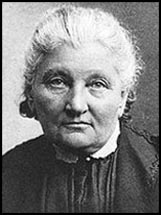
Neil Salzman, meanwhile, reports in his biography of Raymond Robins that
“The Bolsheviks had alleged that the March revolution [installing the Socialist Revolutionaries]…had been supported by Wall Street capital….One report, issued in Pravda, repeated the accusation that Thompson had been ‘trying to get the Trans-Siberian Railroad for the Morgans and copper interests for himself.’” [29]
This is the level of information warfare at play: Antony Sutton appears to have lifted an exposé by the Bolsheviks against a covert anti-Bolshevik campaign funded by Wall Street; he then used it as black propaganda (source-based plagiarism) in his own anti-Bolshevik campaign painting Wall Street and the Bolsheviks as ideologically united. The serpentine scholar eats his own tail.
Derailing Détente, Pre-empting Revolt
Sutton’s overall influence on dissident politics extends beyond the scope of this article. In particular, beginning in the 1980s, Sutton redefined the term “Hegelian Dialectic” among populists to refer to a theory that he seems to have personally created. Expanding his Bolshevik fabrications into a meta-historical conspiracy, it claimed that virtually all revolutionary movements were fraudulent and part of a design by elite global societies. This had little in common with Hegel’s actual philosophy, but instead seemed to be an unacknowledged rewrite of Illuminati legends dating back to the 18th century.[30]
That will have to be the subject of another article, however. To conclude this profile, let us look at Antony Sutton’s relationship with Cold War politics and the neo-conservative establishment, and if this relationship comports with his reputation as a maverick anti-war libertarian.
In the early 1970s, the Vietnam War was being brought to a close through détente, the process of capitalist and communist countries increasing trade and diplomatic relations with each other (including the establishment of a major nuclear weapons treaty with the Soviets). Sutton, however, protested that all industrial trade with the Russians had a positive impact on the Soviet arms industry, and thereby the global communist arsenal. Characterizing the Soviets as the eternal, immutable enemies of America—even as they signed arms reduction treaties—he labeled this a form of “national suicide” which became the title of the book he published in 1972.
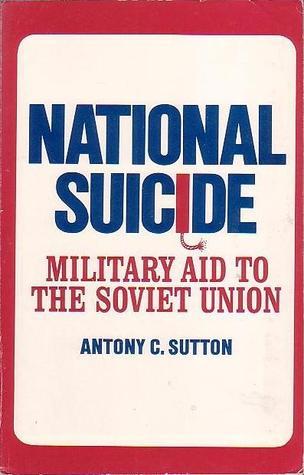
National Suicide was stuffed with data, but even many anti-communists did not buy the overall argument. Trading guns with Native Americans in the 19th century had not led to them defeating the U.S., so why recommend a permanent commercial boycott of the Soviet Union as the key to national well-being? After the massive surge in Soviet-American trade in the mid-1980s led to the collapse of the Warsaw Pact, this claim looked especially silly. Perhaps because he was British, Sutton did not seem to have familiarity with George Washington’s renowned farewell address of 1796, in which the founder warned against permanent hostility toward any nation and encouraged international commerce without ideological restrictions.[31]
Nonetheless, the Cold War, embodied in the military-industrial complex (MIC), was one of the top corporate money-makers in the 1970s, and détente was a threat to it. One of the MIC’s major patrons was Congressman Wright Patman, who had established some of the world’s largest armament plants in his east Texas district.32 When Patman held hearings in Washington, D.C., criticizing President Nixon’s expansion of trade with the Soviets, Sutton was one of his favored witnesses. “I…make no distinction between civilian and military technology, because all transferred technology has some military impact,” Sutton told Congress in 1974. “The term ‘peaceful trade’ in regard to Soviet trade is grossly misleading and should be abandoned.”[32]
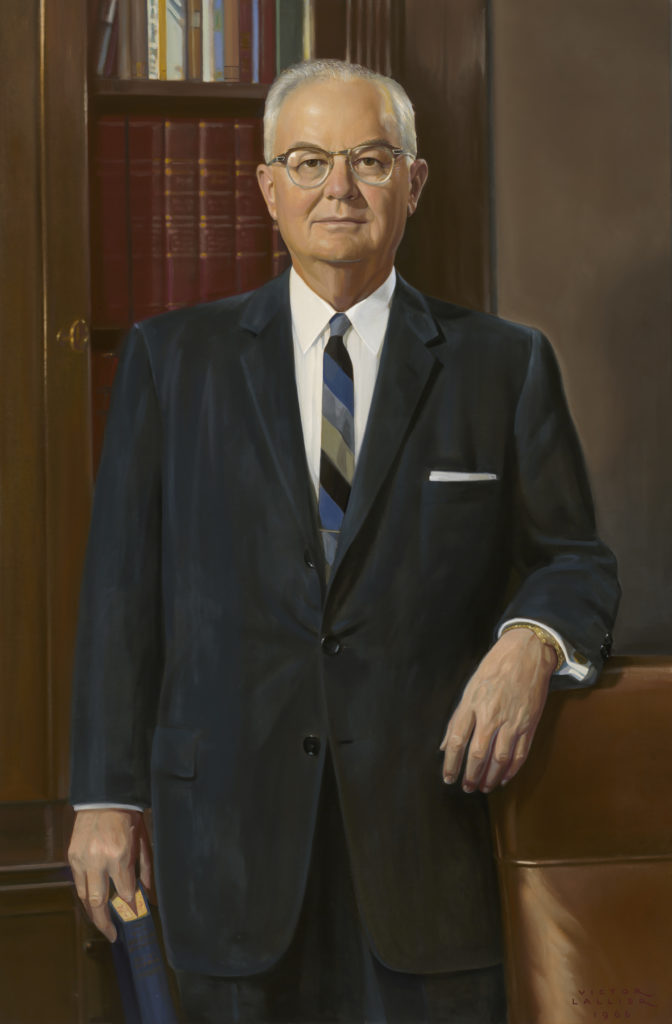
It was here that Sutton debuted his oft-cited claim that he was hounded out of the Hoover Institution because his politics ran counter to the pro-Soviet détente agenda to which, he said, Hoover was committed. “As a result of my publishing…National Suicide, I was removed from my position at the Hoover Institution last year.”
“I wish to place on public record that I consider the actions of the Hoover Institution reminiscent of Hitler’s book burning…Others who have protested our military assistance to the Soviet Union have been intimidated and fired from their jobs. I would respectfully urge that the Congress investigate these matters.”
Although most of the House subcommittee seemed friendly to Sutton, there does not appear to have ever been an investigation of the Hoover Institution firing him—not even by conservative journalists. This was likely because of the incoherence of his claim: Sutton said that he was no longer “officially connected” with Hoover, but also testified that “At the moment, I have an office at the Hoover Institution and I am receiving my monthly research grant…”[33]
There are few ways to be more officially connected to an organization than to have a payroll and an office with them. The 1981 Veritas edition of Wall Street and the Bolshevik Revolution stated that the author “is still affiliated with the [Hoover] institution,” which contradicts his testimony of being a “non-person” at the think tank from 1974 onward. When I asked Sutton’s friend and publisher Kris Millegan when exactly the author’s Hoover Institution grants had ceased, he said he did not have that information.[34]
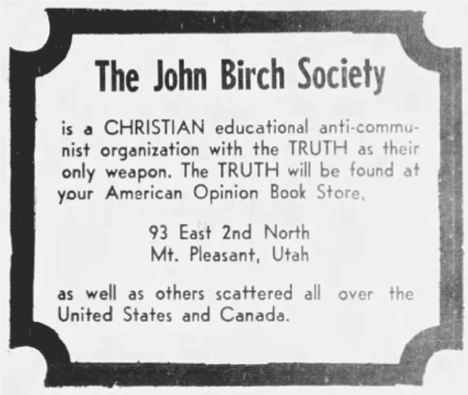
After unveiling his theory of a secret Wall Street-Moscow nexus, Sutton began presenting himself as a critic of the Cold War, going so far as to denounce Ronald Reagan. But in the tradition of the John Birch Society which had denounced President Eisenhower, Sutton only chastised Reagan for not being anti-communist enough: “…all presidential administrations, from that of Woodrow Wilson to that of Ronald Reagan, have followed a bipartisan foreign policy of building up the Soviet Union,” he wrote in 1986. “It is a policy of suicide.” The historian urged harsher policies on Nicaragua and Afghanistan, showing ignorance of (or perhaps simply covering up for) Reagan’s terroristic CIA subversion in those countries—much as the Birchers had ignored evidence of Eisenhower’s anti-communist coups and information warfare in Guatemala and Iran.[35]
This was accompanied by the odd fact that one of the strongest advocates of the Cold War, historian Richard Pipes, publicly endorsed Sutton’s research. Although Pipes (like Sutton) often portrayed himself as an outsider, he was inside the Council on Foreign Relations, the Bilderberg Group, and the Reagan National Security Council; Pipes was also a leader of Donald Rumsfeld’s Team B initiative and the Committee on the Present Danger, two of the central neo-conservative projects; and he eventually found a home at the Hoover Institution, which was supposedly an anti-Suttonite entity at this point.[36]
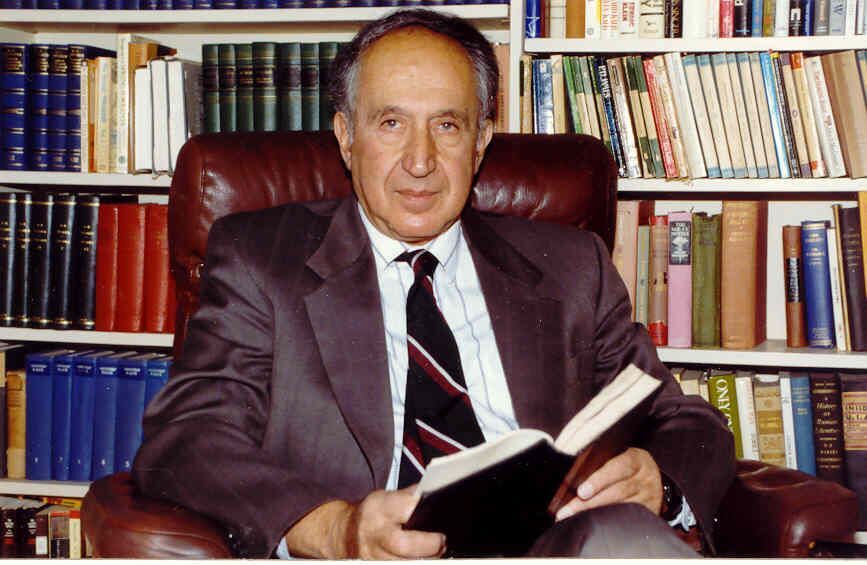
Sutton and Pipes ultimately shared the same underlying neo-conservative premises: that the Cold War—including the Vietnam War—was justified and only the question of “building up the Soviets” qualified as a legitimate foreign policy debate. Combined with the mystery of just what Sutton’s relationship was with the Hoover Institution in his later years, this begs the question: Was Antony Sutton really a muckraker of the American deep state, or one of its most sophisticated agents?
Much as today’s Democrats seek to portray politicians like Donald Trump and Jill Stein as agents of Putin (and segregationists used to portray civil rights workers as “outside agitators”), Cold War propagandists sought to portray Bolsheviks and other revolutionaries as puppets of foreigners. Yet proof of Bolshevik autonomy and popularity with the Russian masses is overwhelming enough to be acknowledged by numerous anti-communist scholars, including by Carroll Quigley, a historian much beloved by right-populists. Quigley wrote:
“…The Bolsheviks were able to come to power by offering peace and land—peace with Germany, ending the war, which most people wanted, and land to the peasants. Since many of the soldiers were peasants, this offer of peace and land created a tremendous appeal for the Bolshevists, an appeal that was not based on the Marxist ideology…”[37]
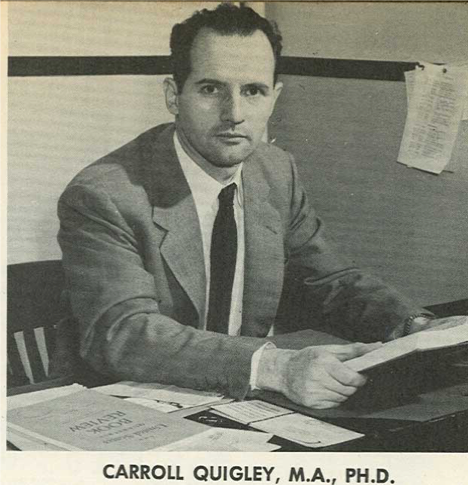
The U.S. government sought to obscure this reality by publishing a pamphlet in 1918 called “The German-Bolshevik Conspiracy” as justification for the invasion of Russia—its title yet another reminder that conspiracy theory is sometimes employed by the government against its enemies. The sloppily forged papers which this pamphlet was based on, known as the “Sisson Documents,” had been debunked by the time of Antony Sutton’s career, however, so a different approach was needed.[38]
In the early 1970s, phenomena like the Vietnam War, the economic crisis, and the congressional investigations of the CIA spurred contempt for the establishment among the American people, including conservatives. To facilitate counter-revolutionary thinking, it was no longer effective to call for loyalty to the elite. The most that could be achieved would be to promote cynicism about revolution. Employing pseudo-scholarship to paint communists as agents of the very finance capitalists which they had always opposed would be extremely useful—a variation on the secret police technique known as “snitch-jacketing,” but writ large over an entire movement.
There is no proof as yet that the U.S. elite tasked Antony Sutton for this agenda. But the proof that he strategically suppressed and distorted history is overwhelming. Sutton exploited the arcane complexity of the Russian left and World War I to confuse and mislead American readers. A decent scholar’s mission is to combat ignorance. Antony Sutton’s mission was to weaponize it. Conspiracy theory as a whole cannot be dismissed. But counter-revolutionary pseudo-history is a hindrance to popular sovereignty and is itself a psychological tool of the establishment.
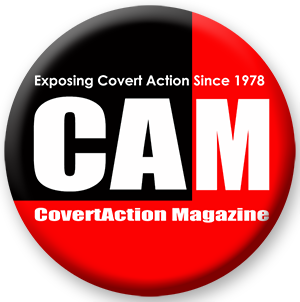
Jose Nino, “Why America’s Oligarchs Are Moving Left,” Mises Institute, June 12, 2021 – https://mises.org/mises-wire/why-americas-oligarchs-are-moving-left ; James Martin, “Review of Wall Street and the Bolshevik Revolution” Cato Institute, Feb 1st, 1976 – https://www.libertarianism.org/publications/essays/wall-street-bolshevik-revolution ; Sutton’s protége, Patrick Wood, is often featured in videos by Children’s Health Defense (founded by Robert F. Kennedy Jr.) – https://live.childrenshealthdefense.org/chd-tv/shows/chdtv-exclusives/chdtv-exclusive-with-patrick-m-wood/ ; Sutton’s most popular books are currently posted on the website ModernHistoryProject.org – https://modernhistoryproject.org/mhp?Article=Books/Onsite ↑
See for instance the biography of Sutton posted by his friend and publisher Kris Millegan on https://www.antonysutton.com/ ↑
Lynn Kinsky, “Frontlines” Reason magazine, February 1974 –
https://reason.com/1974/02/01/frontlines-48/ ; Sam Blumenfeld, “The Hegelian Statist Virus in the Republican Party” The New American, August 2011 – https://thenewamerican.com/opinion/the-hegelian-statist-virus-in-the-republican-party/_pdf/ ↑James Phelan, “Mutiny in the Birch Society” Saturday Evening Post, April 8, 1967 – https://www.saturdayeveningpost.com/2017/04/rise-fall-john-birch-society-50-years-ago/ ; Nesta Bevan “Revilo Oliver: The Forgotten Conservative” Taki’s Magazine, September 22, 2009 – https://www.takimag.com/article/the_forgotten_conservative/ ; Antony Sutton, “The State of Research Concerning Power Elites,” Conspiracy Digest, Summer 1977 – https://archive.org/details/ConspiracyDigestSummer1977/page/n3/mode/2up?view=theater ↑
Chip Berlet ””Toxic to Democracy: Conspiracy Theories, Demonization, & Scapegoating” Political Research Associates – https://politicalresearch.org/sites/default/files/2018-10/Toxic-2D-all-rev-04.pdf ; I refer to Berlet’s work as “close to academic” because it has been repeatedly cited in academic publications, not because it has passed peer review. Max Parry has also done scholarly criticism of Sutton, see “History of the Russian Revolution: Separating Truth from Myth” Centre for Research on Globalization – https://www.globalresearch.ca/russian-revolution-separating-truth-myth/5734305 ↑
Michael Rectenwald, “Libertarianism versus Postmodernism and ‘Social Justice’ Ideology” Quarterly Journal of Austrian Economics, Summer 2019 – https://mises.org/quarterly-journal-austrian-economics/libertarianisms-versus-postmodernism-and-social-justice-ideology ; “Butchering Our Sacred Cows- Featuring Richard Cox” Libertarian Institute, Aug 12, 2024 – https://libertarianinstitute.org/uncategorized/butchering-our-sacred-cows-ft-richard-cox-ep-277/ ↑
Crane is portrayed as pro-Bolshevik in Sutton’s books. The quote is cited in Albert Parry, “Charles R. Crane, Friend of Russia” The Russia Review, Spring 1947 – https://www.jstor.org/stable/125305 ↑
Antony C. Sutton, “Chapter II” Wall Street and the Bolshevik Revolution (New Rochelle, NY: Arlington House, 1974) ; J.C. Wise, Woodrow Wilson: Disciple of Revolution (New York: Paisley Press, 1938) 91-94; https://archive.org/details/WoodrowWilsonDiscipleOfRevolution/page/n3/mode/2up?q=passport ↑
Woodrow Wilson, “The Ideals of America” The Atlantic, December 26, 1901 – https://www.theatlantic.com/magazine/archive/1902/12/the-ideals-of-america/376192/ ↑
“Assistant Secretary of the Treasury (Leffingwell) to the Counselor for the Department of State (Polk), ” March 5, 1918, Papers Relating to the Foreign Relations of the United States, 1918, Russia, Volume III – https://history.state.gov/historicaldocuments/frus1918Russiav03/d55; “Assistant Secretary of the Treasury (Leffingwell) to the Counselor for the Department of State (Polk)” May 4, 1918 – https://history.state.gov/historicaldocuments/frus1918Russiav03/d66 . The above are cited in David Foglesong, America’s Secret War Against the Bolsheviks (Chapel Hill: University of North Carolina Press, 1995). On page 64 of the book, Foglesong reports “On December 20 [1917] the National City Bank made several payments for the [anti-Bolshevik] Russian embassy, including $325,000 to the Remington Company for rifles and $2,075,000 to JP Morgan in connection with a Westinghouse arms contract. [Kerensky-appointed Ambassador to the US] Bakhmeteff informed the Provisional Government ambassador to France in late December [that] American officials were doing everything possible to safeguard Russian military orders that were of vital interest to the future of Russia.” ↑
“The Secretary of State to President Wilson,” December 12, 1917, Papers Relating to the Foreign Relations of the United States, The Lansing Papers, 1914–1920, Volume II –
https://history.state.gov/historicaldocuments/frus1914-20v02/d177 ↑
Political Memoirs of Paul Miliukov (Ann Arbor, University of Michigan Press, 1967), p. 444-445 –
https://archive.org/details/politicalmemoirs00mili/page/n23/mode/2up?q=trotsky&view=theater ↑
William Appleman Williams, American-Russian Relations, 1781-1947 (London: Macmillan, 1954); Christopher Lasch, American Liberals and the Russian Revolution (New York: Columbia University Press, 1962); John Dos Passos, Mr. Wilson’ War: From the Assassination of McKinley to the Defeat of the League of Nations (New York: Doubleday, 1962) ;General Judson quote from William V. Judson, Russia in War and Revolution (Ohio: Kent State University Press, 1998), p. 196 ↑
Williams, American-Russian Relations, p. 80-83 ↑
Lenin, “Chapter III” Imperialism, the Highest Stage of Capitalism –https://www.marxists.org/archive/lenin/works/1916/imp-hsc/ch03.htm; Hassan Malik, Bankers and Bolsheviks: International Finance and the Russian Revolution (New Jersey: Princeton University Press, 2018), p. 2-4 ↑
Malik, Bankers and Bolsheviks, p.129-131, 162-166 ↑
Michael Jabara Carley, Silent Conflict:A Hidden History of Early Soviet-Western Relations (New York: Rowman and Littlefield, 2014) ; Carrol Quigley “Development of the Soviet Economy” 1953; http://www.carrollquigley.net/Lectures/the-development-of-the-soviet-economy-lecture.htm ↑
Neil V. Salzman, Reform & Revolution: The Life and Times of Raymond Robins (Kent, OH: Kent State University Press, 1991), pp. 220-26; Williams, American-Russian Relations, pp. 132-38; Norman Saul, War and Revolution: The United States and Russia, 1914-1921 (Lawrence, KS: University Press of Kansas, 2001), pp. 250-52. ↑
Williams, American-Russian Relations, p. 132-135; Erick van Ree “Lenin’s Conception of Socialism in One Country, 1915-1917,” Revolutionary Russia, November 20, 2010 – https://www.tandfonline.com/doi/abs/10.1080/09546545.2010.523068; Joshua Greenberg, “Comrades and brothers” Churchill, Stalin and the Moscow Conference of 1942” International Churchill Society – https://winstonchurchill.org/publications/finest-hour-extras/comrades-and-brothers-churchill-stalin-and-the-moscow-conference-of-1942/ ↑
Klaus Richter “Independence Wars (Lithuania, Latvia, and Estonia)” International Encyclopedia of the First World War; https://encyclopedia.1914-1918-online.net/article/independence-wars-lithuania-latvia-and-estonia/; Saul, War and Revolution, p.254 ↑
Sutton, Wall Street and the Bolshevik Revolution, Ch. III; Williams, American-Russian Relations, p. 81-84 ; Vladimir Noskov “David R. Francis, Ambassador to Four Russian Governments” Journal of Russian American Studies, May 2018 – https://journals.ku.edu/jras/article/view/7556/6891 ↑
Sasha Kropotkin was the daughter of the foremost anarchist of the period, Peter Kropotkin, who had been exiled in Western Europe for decades. She was not an anarchist, however, and reclaimed her noble title when she returned to Russia. Williams, American-Russian Relations, pp.99, 110; “Somerset Maugham” Spartacus Educational – https://spartacus-educational.com/Jmaugham.htm ↑
Sutton, “Chapter V,” Wall Street and the Bolshevik Revolution; The Cabinet Diaries of Josephus Daniels (Lincoln: University of Nebraska Press, 1963) p. 262-263;
https://archive.org/details/cabinetdiariesof0000dani/page/446/mode/2up?q=kerensky; Jeremy Kuzmarov “The Wilson administration’s war on Russian Bolshevism” Historians for Peace and Freedom – https://peacehistory-usfp.org/ww1-russia/ ↑
Kuzmarov, “The Wilson administration’s war on Russian Bolshevism”; Arno J. Mayer, Why Did the Heavens Not Darken? The ‘Final Solution’ in History (Brooklyn: Verso Books, 2012), pp. 57-58. ↑
”Diary from the Silver Parrish diary, 1918-1919,” [Folder 1, Item 1].” In the digital collection Polar Bear Expedition Digital Materials. https://name.umdl.umich.edu/86616.0001.001. University of Michigan Library Digital Collections. Accessed November 11, 2024. ↑
Gillian Passmore “Arthur Ransome wooed Trotsky’s secretary into spying for Britain” The Times (London), July 18, 2010 – https://www.thetimes.com/article/arthur-ransome-wooed-trotskys-secretary-into-spying-for-britain-t9l0lrvhwdj ; Martin Sixsmith “Fania Kaplan’s Attempt to Kill Lenin” in Tony Brenton, ed., Was Revolution Inevitable? Turning Points of the Russian Revolution (New York: Oxford University Press, 2017); Jonathan Schneer, The Lockhart Plot: Love, Betrayal, Assassination and Counter-Revolution in Lenin’s Russia (Oxford University Press, 2018); Mike Thompson, “Did Britain try to assassinate Lenin?” BBC, March 19, 2011 – https://www.bbc.com/news/world-12785695 ↑
“The Ambassador in Russia ( Francis) to the Secretary of State” December 8, 1917 – https://history.state.gov/historicaldocuments/frus1918Russiav01/d288 ↑
“Catherine Breshkovsky” Cengage Encyclopedia ↑
Salzman, Reform and Revolution, p. 211-213 ↑
Antony Sutton, America’s Secret Establishment (Liberty House Press, 1986); As noted above, Sutton had originally repudiated Illuminati theories when he began his populist work in the 1970s. See Conspiracy Digest, Summer 1977. ↑
For the extent of the colonizer-Native American arms trade and technology transfer, see David J. Silverman “Firearms and the Violent Transformation of Native America” The Shear, December 27, 2016 – https://shear.org/2016/12/27/firearms-and-the-violent-transformation-of-native-america/ ↑
Mark Stanley, “The Death of Wright Patman: Mourning the End of an Era” East Texas Historical Journal, March 2004 – https://scholarworks.sfasu.edu/cgi/viewcontent.cgi?httpsredir=1&article=2407&context=ethj; “The Lone Star Story: Sixty-Eight Years of Excellence [The Army Ammunition Plant Unit History],” U.S. Army Joint Munitions Command -https://www.jmc.army.mil/Docs/History/the%20lone%20star%20story.pdf; Jaclyn Tripp, “East Texas refuge, once an ammunition plant, helped thaw the Cold War,” KTAL News, August 25, 2023 – https://www.ktalnews.com/tour-of-towns/east-texas-refuge-once-an-ammunition-plant-helped-thaw-the-cold-war/ ↑
Sutton testified on April 24, 1974. Hearings Before the Subcommittee on International Trade, House of Representatives, 93rd Congress, Second Session (US Government Printing Office, 1974), p. 156 – https://www.google.com/books/edition/International_Economic_Policy/swpYULtAXmMC?hl=en ↑
Sutton, Wall Street and the Bolshevik Revolution (Veritas, 1981), backcover; Kris Millegan comment is from an email to the author, December 28, 2023, 10:02 am ; Another peculiar fact is that Sutton’s official papers are entrusted to the Hoover Institution. I contacted Hoover to ask if this was done on the personal wishes of Sutton, but did not receive a clear answer, as per email message dated to the author October 30, 2024, 2:42 pm. ↑
Antony Sutton, The Best Enemy Democracy Money Can Buy, chapter 13 (New York: Liberty House Press, 1986). Years later, after the mainstream media had exposed the Iran-Contra scandal, Sutton joined in condemning aspects of the Nicaragua operations, although he put the blame almost exclusively on Vice President Bush. ↑
Pipes’ praise of Sutton is often cited by the latter’s publishers, like Kris Millegan. See the homepage of https://www.antonysutton.com/ ; For Pipes’ elite connections, see “Interview:Richard Pipes” C-SPAN Booknotes, December 7, 2003 – https://archive.ph/20190919220545/http://www.booknotes.org/FullPage.aspx#selection-41.1-57.16; ↑
Quigley, “The Development of the Soviet Economy”, 1953 ↑
In Wall Street and the Bolshevik Revolution, Sutton acknowledges that the Sisson Documents are forgeries. ↑
CovertAction Magazine is made possible by subscriptions, orders and donations from readers like you.
Blow the Whistle on U.S. Imperialism
Click the whistle and donate
When you donate to CovertAction Magazine, you are supporting investigative journalism. Your contributions go directly to supporting the development, production, editing, and dissemination of the Magazine.
CovertAction Magazine does not receive corporate or government sponsorship. Yet, we hold a steadfast commitment to providing compensation for writers, editorial and technical support. Your support helps facilitate this compensation as well as increase the caliber of this work.
Please make a donation by clicking on the donate logo above and enter the amount and your credit or debit card information.
CovertAction Institute, Inc. (CAI) is a 501(c)(3) non-profit organization and your gift is tax-deductible for federal income purposes. CAI’s tax-exempt ID number is 87-2461683.
We sincerely thank you for your support.
Disclaimer: The contents of this article are the sole responsibility of the author(s). CovertAction Institute, Inc. (CAI), including its Board of Directors (BD), Editorial Board (EB), Advisory Board (AB), staff, volunteers and its projects (including CovertAction Magazine) are not responsible for any inaccurate or incorrect statement in this article. This article also does not necessarily represent the views the BD, the EB, the AB, staff, volunteers, or any members of its projects.
Differing viewpoints: CAM publishes articles with differing viewpoints in an effort to nurture vibrant debate and thoughtful critical analysis. Feel free to comment on the articles in the comment section and/or send your letters to the Editors, which we will publish in the Letters column.
Copyrighted Material: This web site may contain copyrighted material the use of which has not always been specifically authorized by the copyright owner. As a not-for-profit charitable organization incorporated in the State of New York, we are making such material available in an effort to advance the understanding of humanity’s problems and hopefully to help find solutions for those problems. We believe this constitutes a ‘fair use’ of any such copyrighted material as provided for in section 107 of the US Copyright Law. You can read more about ‘fair use’ and US Copyright Law at the Legal Information Institute of Cornell Law School.
Republishing: CovertAction Magazine (CAM) grants permission to cross-post CAM articles on not-for-profit community internet sites as long as the source is acknowledged together with a hyperlink to the original CovertAction Magazine article. Also, kindly let us know at info@CovertActionMagazine.com. For publication of CAM articles in print or other forms including commercial internet sites, contact: info@CovertActionMagazine.com.
By using this site, you agree to these terms above.
About the Author

Garrett Ramirez is author of the The Social Populist substack.
He is a former New York City School Educational Assistant and is a member of the steering committee for Teachers for Choice, a medical freedom activist group comprised of teachers and parents who are 100% against medical mandates, especially ones that may risk the loss of a job.
Garrett can be reached at renzoray@protonmail.com.
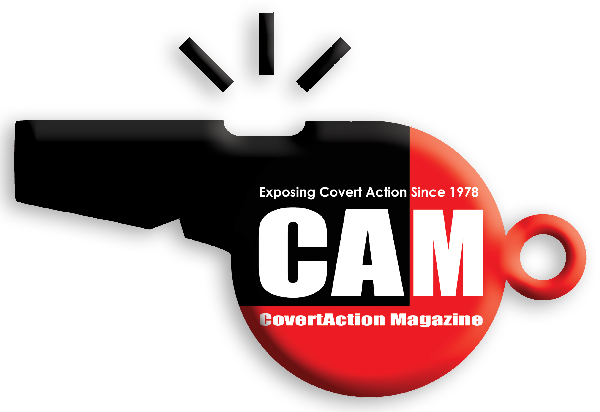
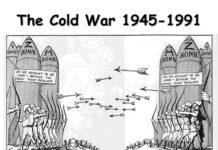
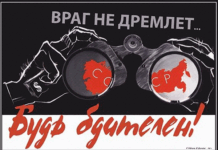
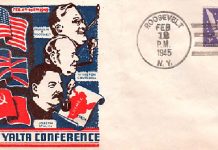
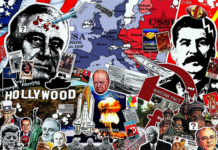
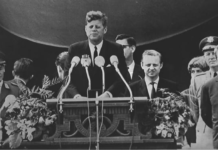
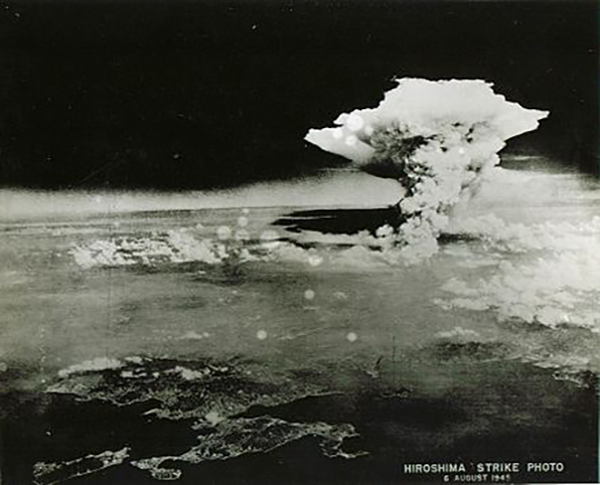
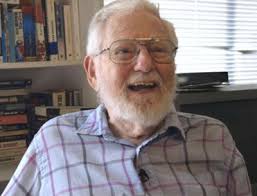

This is the most pedestrian hit piece I have ever read about Antony Sutton. Your ignorance about Sutton and his contribution to the historical record is pathetically stunning.
I worked with Sutton between 1977 and 1982, and we were the de facto experts on the Trilateral Commission. We co-authored Trilaterals Over Washington, Volumes I and II. You apparently missed that one, even though it was one of his important works. Alas, you didn’t know I was lurking in the ethersphere as Sutton’s last living colleague and collaborator.
If Sutton were alive today, he would wholeheartedly support my work on Technocracy and the multiple books I have since written about the subject that extend our early works.
Hi Patrick,
I’m actually well aware of your work. It was your promotion of Sutton that partly inspired this article, and the first footnote here mentions you. I think some of your journalism is excellent, but your promotion of Sutton is misguided at best.
The article notes that there is more to be said about Sutton than this piece can encompass. But I notice you haven’t rebutted what *is* written here about the misrepresentations in ‘Wall Street and the Bolshevik Revolution’ which is one of Sutton’s most cited, and most representative, works. Despite your personal relationship, you haven’t said anything that explains his contradictory statements about his relationship with the neoconservative Hoover Institution.
I avoided going into Sutton’s embarrassing claim that the Soviets brought down the space shuttle Challenger in 1986, and his accompanying prediction in 1987 that the USSR would fight on in Afghanistan for many years and expand their global power (the Soviet Union dissolved less than four years later). These facts would certainly bolster my argument that Sutton was a fantasist and (contrary to his protestations) a knee-jerk anti-communist. But these 1980s fabrications are less famous than his first Wall Street book. And they were already dissected by Richard Cox in an episode of his Deep State Consciousness podcast:
https://www.youtube.com/watch?v=lzlkxzGYiB8
If you’d like to arrange an extended debate about this subject please feel free to contact me with the information on my byline.
So I suppose the sealed train was a fabrication. And Armand Hammer was a fabrication. Not. It is this hit piece, not Sutton, that contorts historical facts. Yeh, right, Morgan and Rockefeller were pure as the driven snow, and yeh, right, Lenin was a peacenik. Lenin, who hunted down and killed all the Mensheviks, to the last man. Lenin, not Trotsky, was the German agent, and traitor to Russia. As was Stalin who, besides murdering 32 million Russians, did everything in his power to ensure a German vicrtory in Operation Barbarossa. Beginning with the nonaggression pact, which weakened Russia’s defensive borders, and then decimating the Russian officer corp just prior to the German invasion. Torturing then killing all the Russian soldiers who had participated in the Spanish Civil was against Franco. And having Sorge murdered when Sorge warned Stalin of the impending German invasion.
Here is some of what I wrote about the JP Morgan interests, citing William Appleman Williams’ book ‘American-Soviet Relations’ (a book Sutton pretended doesn’t exist) –
“In a section of his book titled ‘A Revolution Challenges the House of Morgan,’ Williams noted that “the House of Morgan not only had an important stake in American-Russian trade and large direct investments in Russia, but also, by 1917, had immense sums tied to the Allied cause in the war.” Contrary to Sutton’s assertions, Wall Street bankers had no motivation to undermine the capitalist status quo in Russia, because they were the primary beneficiaries of it. Morgan did, however, have great incentives to keep Russia at war with Germany by any means necessary. This is why Wall Street contrived the American Red Cross Mission to Russia—its agenda was to keep anti-war parties like the Bolsheviks out of power, not to put them in.”
World War I killed 40 million men, women, and children. Holding the House of Morgan accountable for prolonging the war definitely doesn’t make them look “pure as the driven snow.”
Clarification: The Williams book is ‘American-Russian Relations, 1781-1947’ (London: Macmillan, 1954)